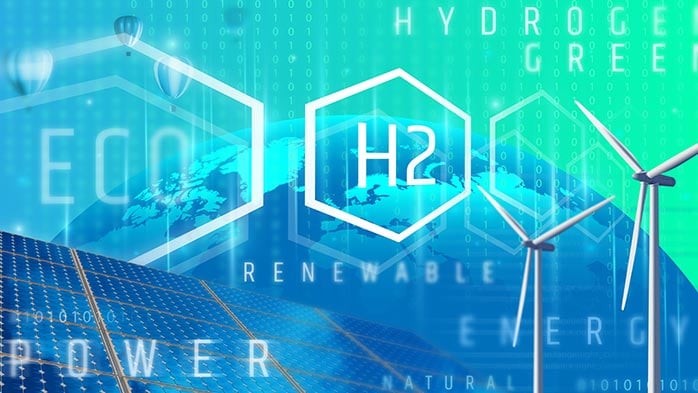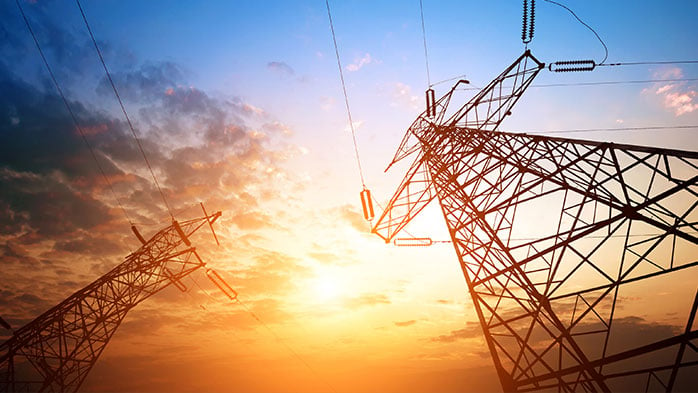Decarbonisation is expected to lead to more power generation but simultaneously lower power sector emission intensities. However, given current decarbonisation efforts in the power and other sectors, the world is headed on a trajectory of significant global warming. If the world were instead to shift to a trajectory with less warming, what would it look like? In the latest edition of the CRU Power Transition Service, we consider a <2ºC scenario (which is separate from our base case forecast) where there is significantly more power generation and capacity, lower power sector emission intensities and more metal demand from installing more renewable power capacity.
The world reaches a <2ºC pathway by 2050 in our scenario
In CRU’s Power Transition Service, our base case forecast is that global power generation will nearly double between now and 2050, as discussed in a previous Insight. Yet, power sector emissions decline as total fossil power generation falls. In CRU’s Sustainability and Emissions Service, we combine power with other commodity sector emissions and forecast that in 2050 the world will be on a pathway where global average temperatures will likely be 2.5–3.0ºC above pre-industrial levels. Given our expectations of the political will and technological costs to decarbonise, the world will not reach a more ‘decarbonised’ pathway by 2050, despite broad consensus for a 1.5°C temperature target in the Paris Agreement in 2015.
Discussions to limit temperature rises to ‘well below 2.0ºC’ and to pursue efforts to limit them to 1.5ºC (with net-zero emissions by 2050) were credible targets at the time of the Paris Accord negotiations in 2015, but progress since then has rendered these targets mutually incompatible. Even if the world puts itself on a net-zero CO2 emissions by 2050 pathway starting from today, high emissions in the eight years following the Paris Accord mean it will still be off-track to limiting temperatures to ‘well below 2.0ºC’ or 1.5ºC.
Our analysis shows that a net-zero CO2 emissions by 2050 pathway from today would be consistent with a temperature pathway of just under 2ºC (<2ºC) warming, but political will would need to change significantly to allow this to happen. The difference between <2ºC – our scenario – and the Paris climate target appears small but disproportionately more effort will be required to limit temperatures well below <2ºC.
Faster electrification leads to even more power generation
Carbon abatement curves such as the one for the EU shown below, taken from our Sustainability and Emissions Service, shows the cost efficiency of decarbonising power generation compared to other sectors. For instance, decarbonisation by replacing coal with wind power costs less than decarbonisation by replacing marine fuel with low-emission ammonia per emission unit. Consistent with this, in our base case, we forecast a much greater reduction in power sector emission intensity than for non-power sectors, despite a doubling of power demand between now and 2050. Additionally, in our <2ºC scenario, we assume even lower power sector emission intensities and an even greater increase to power demand by 2050.
With fewer negative climate impacts under the <2ºC scenario compared to our base case, global power demand would be assumed to be higher anyway because of expected higher economic growth and activity. However, the accelerated switching of vehicles, heating, steel production and marine fuels to electric vehicles (EV), heat pumps, green hydrogen-based steel production and low-emission ammonia, respectively, under the <2°C scenario adds further to power demand.
For example, switching the entire EU BF/BOF steel industry over to hydrogen-based iron ore reduction would require more than 10% of current EU electricity demand to produce the required hydrogen via electrolysis. Additionally, power demand will accelerate still further in the late-2040s under our <2°C scenario as we assume increased adoption of electricity-based Direct Air Capture (DAC) will be needed to help meet the net-zero target by 2050.
Consistent with greater electrification and power requirements, our <2ºC scenario leads to ~40% more power generation than our base case by 2050.
Power sector emissions are still not zero by 2050
In both our base case and the <2ºC scenario discussed here, unabated fossil power generation declines and abated power (i.e. with CCS and co-firing) generation rises to 2050. Though less than half our base case, global net power sector emissions are still positive by 2050 in our <2ºC scenario as India, China and other countries will retain some unabated fossil power generation. However, we assume DAC and reforestation are able to remove the remaining CO2 emissions by 2050, which allows net-zero CO2 emissions to be achieved by that year.
While our <2ºC scenario includes less fossil power generation than in the base case, alternative scenarios, not considered here, may have significantly more fossil power generation. For instance, if relatively low levels of energy storage are assumed, much more gas-based power might be used to stabilise grids that have high levels of solar and wind power, which are intermittent. However, we have assumed that energy storage will be the primary means of grid stabilisation in the future.
More solar panels and wind turbines support metal demand
In our base case, we forecast metal demand for solar PV manufacturing will increase to a 2030 peak. Meanwhile, in our <2ºC scenario, solar metal demand grows over twice as quickly over the 2024–2030 period and, in the late-2040s, solar panel replacements increase rapidly due to (1) increasing power demand and (2) more solar capacity replacements.
Metal demand for wind turbine manufacturing is also much higher in the <2ºC scenario. Annual global onshore and offshore wind manufacturing metal needs (particularly steel that makes up the majority of wind turbine metal demand) will be 1.5–2.0x the base case level by 2050, rising significantly in the late-2040s for the same reasons as solar. Our Power Transition Service includes databases which break down solar, onshore wind and offshore wind metal demand by steel, aluminium, copper, silicon, rare earth, etc.
In the <2°C scenario, countries might avoid a sudden increase in metal demand in the late-2040s by replacing aging solar panels earlier or later than normal service lifetimes. In addition, more metal might be re-used instead of being completely replaced. While we factor in such timing and metal re-use in our models and forecasts, it may happen to a greater extent than we currently assume.
Download detailed data from the Power Transition Service
To compare power generation, capacity and emissions as well as metal demand in the base case and the <2ºC scenario for individual countries and regions (including the USA, European countries, China and India) annually to 2050, download the CRU Power Transition Service datapack.
If you would like to discuss any aspect of the power transition and/or decarbonisation with us, please contact us. If you would like a demo of our Power Transition Service and/or the Sustainability and Emissions Service to better understand their features and how they can best serve your organisation, please get in touch.

















